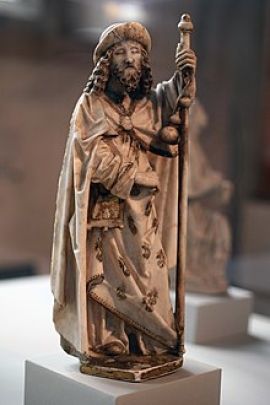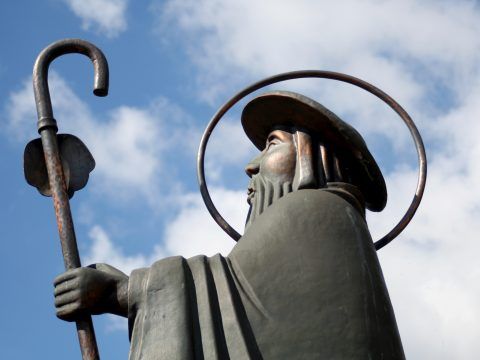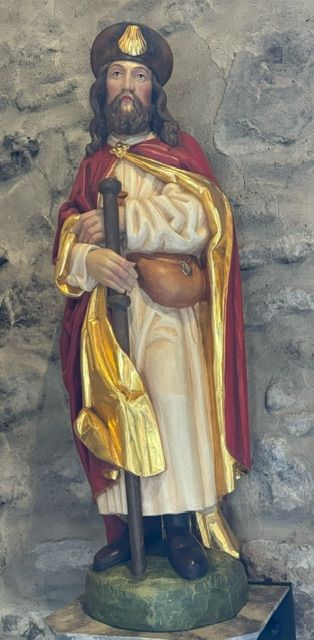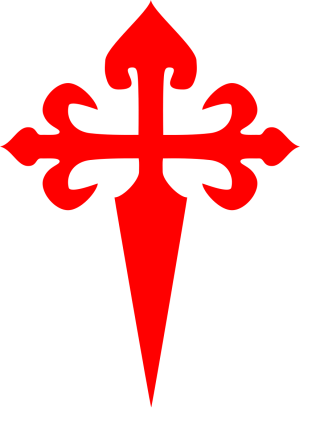James the Greater
James of Zebedee or James the Greater
James, son of Zebedee, or James the Greater, or Saint James (Greek: Ἰάκωβος, Iakôbos, from Hebrew: יעקב, Ya'aqov) was a Jew from Galilee and one of the Twelve Apostles of Jesus Christ. Named “James, son of Zebedee” in the New Testament, he is the brother of the apostle John. Both were fishermen from Lake Tiberias.
New Testament
He is the brother of the apostle John. Along with Peter and his brother Andrew, James was one of Jesus' earliest disciples. Synoptic tradition makes him one of the three principal apostles, since he is chosen along with Peter and John to witness crucial events in the Gospel: the resurrection of Jairus' daughter (the head of a synagogue), the Transfiguration on a high mountain and Jesus' prayer on the Mount of Olives.
His death as a martyr is recorded in the New Testament: “He (Herod) slew James, the brother of John, with the sword” (Acts 12:2), at the time of Peter's arrest, and so he was beheaded.
Legend
According to another legend, fundamental to the cult of Santiago de Compostela, the apostle's disciples entrusted his body, after his beheading, to an unmanned ship which then docked in Galicia, in north-western Spain. Assistants deposited it further inland. The tomb then fell into oblivion. After its rediscovery in the 9th century, a chapel, then a church and finally the cathedral were built above it, around which the pilgrimage site of Santiago de Compostela developed and to which the Camino de Santiago leads.
Historical research
According to the current state of research, in addition to the New Testament, there is evidence of a very different nature attesting to the historicity of James. There are several indirect indications of James' missionary activity in Spain and other Western countries. The earliest source indicating a stay in Spain is the door lintel of the Visigothic church of St. Mary in Mérida, dating from around 600.
The Breviarium apostolorum (circa 600), a Georgian writing on the mission territories of the apostles, states that the apostle James preached in Spain and “in western places”.

Statue of James the Greater, Gil de Siloé, Metropolitain Museum of Art
© Wikipedia Loves Art photo pool, Flickr

Statue of Apostle James, Adolf Steines
© public-art-trier.de

St. James Statue made by the woodcarving studio Albl from Oberammergau owned by the Parish 'Musel a Syr, St-Jacques'
Representation
Saint James, patron saint of pilgrims, is depicted with a walking stick and a scallop shell. The scallop shell was given to him posthumously as a sign of recognition, and is usually depicted on his hat, coat or pocket. Thanks to this attribute, from the Middle Ages onwards, the scallop shell became the symbol of pilgrims, particularly those on the Way of St. James.
Veneration
St. James is one of the world's most important saints: many cities (in addition to Santiago de Compostela, Santiago de Chile, Santiago de Cuba, Santiago de los Caballeros, etc.) and hundreds of Santiago churches bear his name.
Commemoration day
In the Protestant and Catholic Church, James is commemorated on July 25, the day on which harvest and fairs were celebrated in many parts of Europe in the Middle Ages.
Order of chivalry
The Order of St. James played an important role in the reconquest of Spain and the conquest of overseas colonies.

 EN
EN  DE
DE  FR
FR 